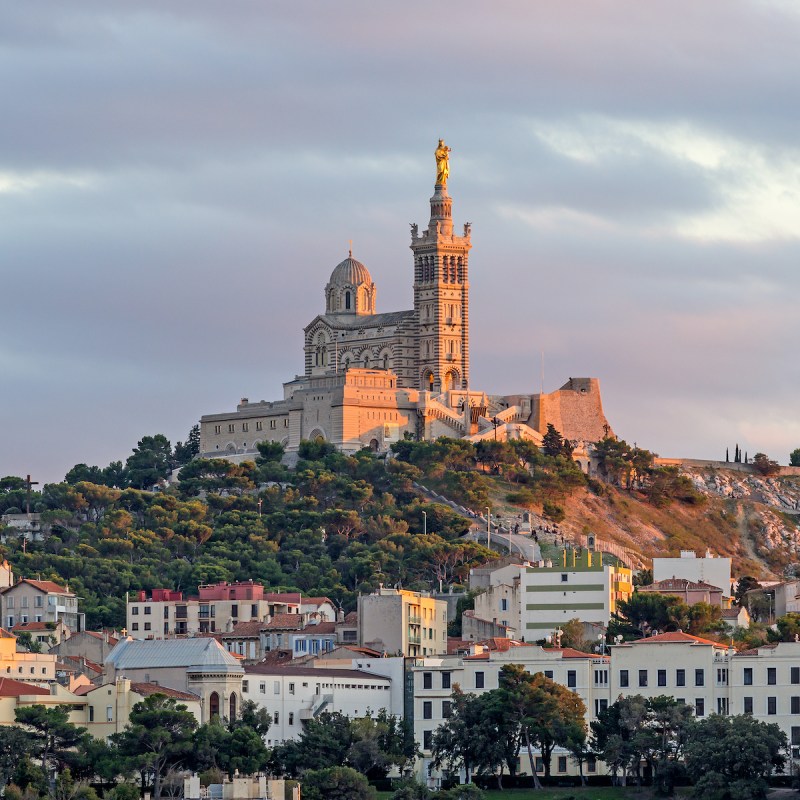
France has always been a popular destination for tourists. Furthermore, since the COVID-19 pandemic began, many French people have been visiting popular areas of France rather than traveling to other countries.
Videos by TravelAwaits
Consequently, many areas of France have been struggling with overcrowding. In response, some of the most popular areas in France have put quotas and reservation systems in place to mitigate overcrowding and traffic congestion.
Here’s what you need to know about these three popular destinations in France.
Marseille
Marseille is the capital of the Provence-Alpes-Côte d’Azur region (or Provence-Alps-French Riviera) and also the capital of the Bouches-du-Rhône department in southern France. Located on the Gulf of Lion, Marseille is one of the major ports on the Mediterranean Sea.
Known as “an interface between city and nature,” the Calanques National Park is located in the heart of Marseille’s metro area but also includes 20 kilometers (about 12 miles) of coastline. The park, which was created in 2012, is France’s 10th national park.
“Since its resounding success during the summer of 2020, the Calanques have been the victim of overcrowding in July and August,” according to the Marseille Metropolitan Tourist Office and Convention Bureau.
“This damages the flora and fauna that are nevertheless protected in the park. To fight against this phenomenon, the park is launching an unprecedented action for a natural space: a system of daily reservations.”
The system limits the daily number of visitors to 500 — down significantly from the past 3,000 daily visitors.
Also, as it did last summer, the Metropolitan Tourist Office will use its “Outside the Walls” system. Here’s how it works: 50 trained seasonal workers will be stationed in the busiest spots in Marseille, including the Calanques, “to manage flows, redirect visitors to less frequented places, and inform them about good practices for preserving the environment.”
Provence-Alpes-Côte D’Azur
For that matter, the entire region of Provence-Alpes-Côte d’Azur, which includes Marseille as well as Nice, Toulon, and Cannes, has been working with navigation app Waze and its local partner, CI-Media, “to better manage the flow of visitors to sensitive nature sites and traffic and congestion during peak travel times,” according to the Provence-Alpes-Côte d’Azur Regional Tourism Committee.
“Too many people are in the same place at the same time when there are other magnificent places to discover nearby,” Loïc Chovelon, general manager of the Provence-Alpes-Côte d’Azur Regional Tourism Committee, said in a statement. “Our whole innovative system has been designed to resolve these issues.”
While current data isn’t available, results of the pilot program in 2020 show that 325,000 drivers using the Waze app were reached with messages that “prompted” them to visit alternate locations than the ones they intended to visit. According to the data, more than 28,000 navigations were taken to the proposed alternative destinations.
Corsica
Corsica, an island west of Italy in the Mediterranean Sea, is another of the 18 regions of France. Known for its port towns and hillside villages, Corsica is also home to miles of beaches.
Beginning this month, Corsica is using visitor quotas to “preserve certain environments from the massive influx of tourists,” according to French newspaper Midi Libre.
“We are entering into a virtuous management of our sites,” said Figaro Guy Armanet, president of the office of the environment of Corsica, according to the paper. “Our interest is to preserve what will allow us to have an economic activity for as long as possible. If we do not put a few safeguards in place, the environmental framework will deteriorate and we will be forced to take drastic measures. If that happens, everyone will lose.”
Three Corsican sites now require online reservations to visit. The first is the Lavezzi Islands, small granite islands and reefs in the Strait of Bonifacio that separate Corsica from Sardinia in the Mediterranean Sea. The other two locations are the Restonica Valley and the Aiguilles de Bavella. To access these sites, it will be necessary to make an online reservation this summer.
In the case of the Lavezzi Islands, for example, only 2,000 people will now be authorized to visit each day.
Be sure to also visit our France content, including:
